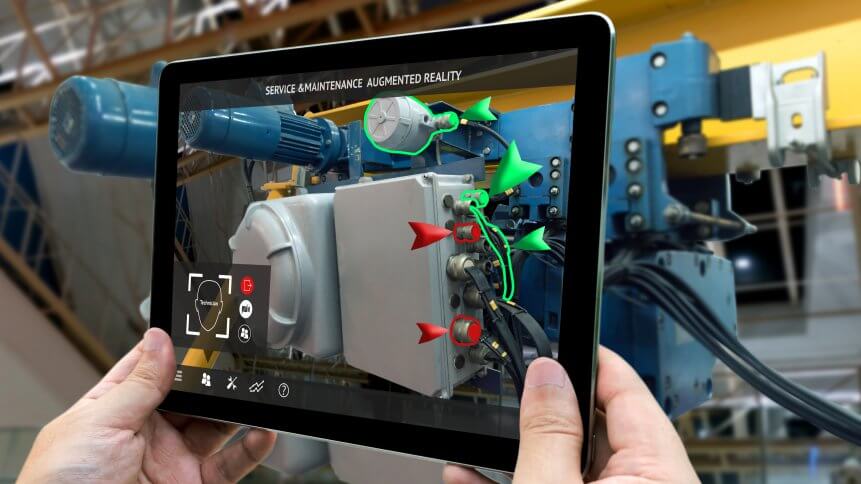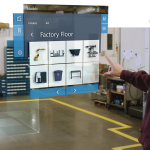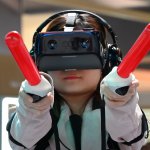AR’s role in the digital transformation of everything

Both Google and Apple are heavily rumored to be working on augmented reality glasses that many predict will pair with our smartphone. The move to create something much lighter, more comfortable, and aesthetically pleasing to consumers outside of geeky tech circles sounds like an easy decision for tech behemoths to make. No offense to Microsoft’s HoloLens intended.
The arrival of 5G and its promises of high bandwidth and low latency would also make it easier to offload the workload to the mobile edge computing. These changes should make Augmented Reality (AR) headsets more affordable and help increase adoption with mainstream audiences. In many ways, the ill-fated Google Glass AR glasses were ahead of their time. But many lessons have since been learned, and there appears to be a genuine thirst for AR.
An increasing number of people have already flirted with a form of AR through their smartphone with the Pokémon Go app and Snapchat filters. However, it appears we are finally getting serious about AR. The AR Market in Europe is predicted to surge by 65 percent and cross US$12 billion by 2024. These changes are expected to increase humankind’s ability to make better decisions faster.
With the world’s largest tech companies allegedly working on new headsets, many businesses will be looking at how they could leverage AR. But what industries would benefit the most?
Will AR transform and save retail?
Bose and Puma have joined the long list of brands that are leveraging AR. Unsurprisingly, an incredible 100 million consumers are expected to shop in AR next year leaving many to wonder if technology could go on to save bricks and mortar retail.
Augmented reality stands out as an easy way to enhance the customer experience. By bringing tech into stores, retailers can enable customers to use their smartphones to add a digital overlay on a product in the real world. This provides retailers with an option to create unique experiences but also get to know the customers browsing in their store.
Zara has tested AR experiences in selected stores and digitally transformed the traditional window dressing and Timberland has also trailed a virtual fitting room. Whether these trials will rescue the more traditional shopping trips remains to be seen. But we can expect it to become a significant role in a new digital in-store experience.
Mixed reality walkthrough guides
After purchasing the latest must-have gadget or household appliance, you will typically find a thick instruction manual written in a variety of languages. If you are the type of person that replaces this step with a YouTube tutorial or walk-through guide, AR could make the process even easier.
Imagine pointing the camera on your smartphone towards a new device and be greeted with an interactive walk-through that tells you what each button does and guides you through the entire setup process. AR has the potential to eradicate one of the oldest friction points and take the fear out of unboxing your latest tech purchase.
Transforming healthcare through AR
Microsoft’s HoloLens was the first AR headset that created holograms of digital content within a real-world environment. The US$3,000 purchase price was never going to win over the casual consumer, but the device is proving to be a big hit in healthcare, particularly with medical students. The ability to closely examine a 3D image of an anatomical part of the body not only helps students learn but can also help improve their confidence.
Mixed reality is already proving to be a game-changer for healthcare in everything from performing live surgeries to delivering ultrasounds in 3D. AR also enables students and medical professionals at all levels to perform more practical studies through AR than they could hope to perform in real-life practice. By bringing the virtual and physical worlds together, we are opening a wide range of learning possibilities.
However, the most prominent transformative qualities of AR in healthcare is helping the way medical professionals innovate, collaborate and help others. As the technology behind AR continues to evolve, it’s essential to remember that there is much more to AR than consumer tech. Sure, it will continue to play a significant role in our everyday lives, but also in the future of our healthcare too.
The digital transformation of the industrial landscape
A look across the current industrial landscape reveals an army of factory workers building the cars, planes and home appliances that we all take for granted. The parts and assembly instructions are typically scattered between a multitude of spreadsheets and software applications. AR could bring all the information and instructions in and overlay it directly onto the factory floor.
Mitsubishi has already developed a 3D AR model that enables maintenance workers to follow performance inspection orders using a combination of AR smart glasses and voice entry technology. There are many other examples of traditional manufacturing industries turning to AR technology for training purposes, increasing productivity and lowering running costs.
In the same way that we have leveraged technology in our homes to make our lives easier, businesses from all industries are now doing the same. For too long, it has felt like going back in time ten years when we leave our tech-fueled homes and enter the workplace. But we are all now taking the expectations from our lifestyle into the office and transforming that too.
Virtual reality (VR) creates immersive experiences and encourages users to lock themselves away from their physical existence. But this is not suited to businesses and consumers who are embracing the collaborative nature of the digital age. By contrast, AR is providing people with access to valuable insights from the digital world and overlaying them into real-life scenarios.
Although we are a few years from realizing the possibilities AR technology can deliver, some believe that we are witnessing the beginning of the end for the smartphone and staring down at a screen. There is an increasing awareness of how too much screen time is harmful to relationships and our well-being.
Imagine an alternative future where the blurred lines between our physical and digital world are removed. Powerful and valuable information is overlaid into our real world and enables teams to collaborate in real-time regardless of their location seamlessly. Rather than continue staring down at screens or hiding from the world in a sinister looking VR headset, maybe it’s time to tear down the virtual walls and try something different and bringing these two worlds together.









